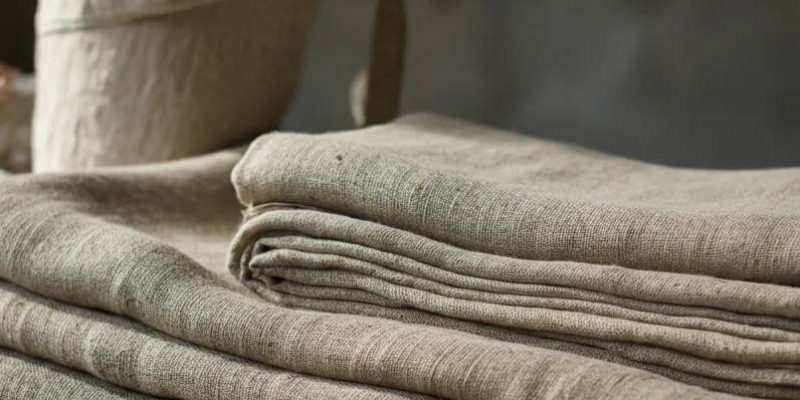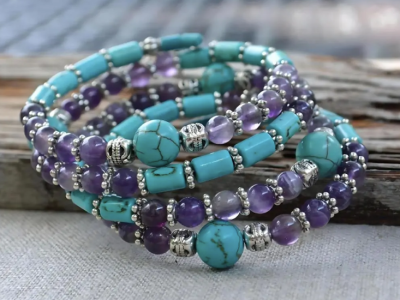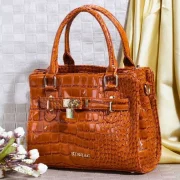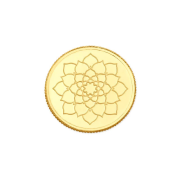You liked how it looked in the trial room. Light, breezy, effortless. But a few hours into wearing it, the creases turned chaotic, the knees bagged out, and the polished look faded fast.
This isn’t just your story, it’s a common one.
Linen pants often feel like the right choice. They tick the boxes for style, comfort, and summer wear. But the difference between a crisp linen pant that lasts all day and one that starts sagging by lunch comes down to how well you spot quality before you buy.
So If you’re planning to buy a pair soon or wondering why your last one didn’t live up to the hype, this is worth your next five minutes.
Understand Fabric Weight: GSM Tells You a Lot
Let’s start with something most people skip, that is, GSM, or grams per square metre. This is a measure of how heavy the fabric is, and it directly affects how your linen pants will behave.
Why it matters:
Lightweight linen (below 150 GSM) may feel airy at first, but it’s usually the first to collapse, both in shape and texture. These are the kinds of pants that bunch at the knees, fold awkwardly at the thighs, and never quite look as fresh as they did in the first hour.
What to look for:
- For everyday wear: 180–230 GSM is ideal. It offers structure without sacrificing breathability.
- If shopping online: Look for this number in the product details. If it’s missing, consider it a red flag unless the brand is transparent in other ways.
- In-store tip: Gently scrunch a part of the pant in your palm. If it crushes instantly and doesn’t regain form when released, it’s likely too light.
2. Weave Type Defines Performance
The weave controls how the fabric behaves in motion, how it holds its form, and how prone it is to creasing.
Most basic linen pants use a plain weave. It’s simple, breathable, and cost-effective, but often too relaxed to maintain a polished look throughout the day.
Better-performing alternatives:
- Tighter plain weaves: These feel smoother and denser. They wrinkle less and fall better on the body.
- Herringbone or twill weaves: These are more structured by nature. They add subtle texture and resist folding in high-friction zones like the thighs and knees.
What to check:
Hold the pants against the light. If the fabric is semi-transparent or the threads appear overly spaced, it won’t last well with regular movement
3. The Stitching Tells You If the Fabric Can Handle Itself
Even with good fabric, if the construction is poor, the pant won’t last.
What to check:
- Seam strength: Check the inner thigh and side seams. Tug them gently to test give. Good linen pants have double stitching or reinforced panels.
- Pockets: Are they sagging already? That’s a sign the fabric can’t support its own shape.
- Hem and waistband finishing: Clean lines and consistent stitching tell you the pant was made with care, not rushed through mass production.
Linen has natural movement, but the right stitching ensures it holds its silhouette.
4. Blended Linen Is Not Always a Compromise
While pure linen is often considered premium, that doesn’t always mean better performance. Many high-quality linen pants include a small percentage of cotton, viscose, or elastane.
Why blends can work better:
- Cotton-linen blends offer more softness and slightly better wrinkle resistance.
- Linen-viscose adds fluidity and reduces roughness.
- Linen-elastane (around 2–3%) gives subtle stretch without looking synthetic.
If your priority is a cleaner, longer-lasting shape throughout the day, a well-blended fabric may outperform 100% linen in the real world.
5. Check the Drape Before You Commit
The drape tells you how the fabric falls. This is where cheap linen often gives itself away.
In-store:
Hold the pants by the waistband and let the legs hang freely. Observe how it settles. If it falls sharply and forms structured folds rather than clinging, it’s more likely to hold its look after wear.
Online:
Zoom into product photos. If the pants on the model cling oddly to the thigh or knee, or show heavy creasing in still images, that’s already a sign of low structure. Good linen will wrinkle, yes, but not collapse.
6. Colour and Dye Quality Reveal Durability
Good linen holds colour well without bleeding or fading too soon. Weak dyeing is often a sign of poor pre-treatment.
What to check:
- Lighter shades like ivory, beige, or sand show weave quality clearly. You’ll spot loose threading or inconsistencies faster.
- Darker shades should have even depth. Patchy colour tones near seams or waistband areas indicate shortcuts in dye processing.
When unsure, opt for mid-tone neutrals. These generally age better, hide mild wrinkling, and offer more versatility.
7. Don’t Ignore Post-Wash Behaviour
If buying from a new label, read the care instructions and reviews carefully.
Why it matters:
Some linen pants shrink, some twist at seams, and others develop permanent crease lines after the first few washes. Good linen, when pre-washed and treated properly during manufacturing, should soften with use, not deform.
Look for descriptions like:
- “Pre-shrunk linen”
- “Garment washed”
- “Stays true to size after wash”
These are small indicators, but they show whether the brand respects fabric behaviour over time.
Final Take
Linen pants will always wrinkle a little, that’s just part of the fabric’s identity. But how much they wrinkle, how fast they lose shape, and how well they hold up with time all depend on choices you make before this type of men’s pants.
A little attention to GSM, weave, stitching, and drape can go a long way in separating the impulse buys from the ones you’ll wear often and well.
Next time you’re buying linen pants, don’t just feel for softness. Feel for structure, check for construction, and treat it like a long-term wardrobe piece, because when chosen well, that’s exactly what it becomes.










Comments